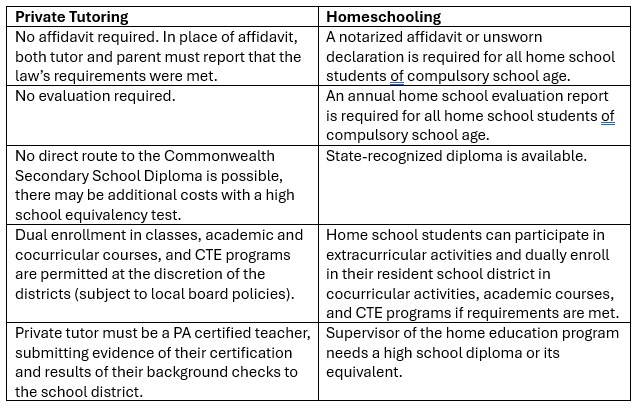What are the laws about educational records?
When it comes to your child’s educational records, there are a few laws that come into play.
Family Educational Rights and Privacy Act (“FERPA”)
The purpose of FERPA is to protect parent and student privacy.[1] FERPA applies to all students.[2] FERPA grants parents the right to inspect and review their child’s educational records[3] and to request an amendment to their child’s educational records[4], and it prohibits school districts from disclosing personally identifiable information without parent consent (with some limited exceptions).[5] When reviewing educational records, FERPA also requires the District to “respond to reasonable requests for explanations and interpretation of education records.”[6] This means if you have questions about the records you’re reviewing, you can (and should!) request that the District explain and interpret those records for you, and the District has to respond, so long as your question is reasonable (i.e. related to the documents you’re reviewing).
FERPA defines an educational record as, “those records that are: (1) Directly related to a student; and (2) Maintained by an educational agency or institution or by a party acting for the agency or institution.”[7] Looking at that definition a little more closely, a record is “any information recorded in any way, including, but not limited to, handwriting, print, computer media, video or audio tape, film, microfilm and microfiche.”[8] While FERPA doesn’t specifically define what it means to be “directly related to a student,” this is generally considered to include any record with personally identifiable information regarding a student. Personally identifiable information includes not only a student and parent’s names, their address, or other specific identifier (such as birth date or social security number), but also, “other information that, alone or in combination, is linked or linkable to a specific student that would allow a reasonable person in the school community, who does not have personal knowledge of the relevant circumstances, to identify the student with reasonable certainty” and “information requested by a person who the [school district] reasonably believes knows the identify of the student to whom the education record relates.”[9]
While “maintained” is also not defined by FERPA, the United States Supreme Court has defined it as, “to keep in existence or continuance; preserve; retain."[10] The Court further noted that "[t]he word 'maintain' suggests FERPA records will be kept in a filing cabinet in a records room at the school or on a permanent secure database, perhaps even after the student is no longer enrolled." Id. at 433 (emphasis added).
Individuals with Disabilities Education Act (“IDEA”)
IDEA is a civil rights law regarding students with disabilities, providing specific rules and rights for ensuring these students receive a free and appropriate public education. One of these rights includes the right to inspect and review records.[11] This applies to all records that are, “collected, maintained, or used” by the school district.[12] In addition to simply inspecting and reviewing the records, IDEA also gives parents the following rights:
(1) The right to an explanation and interpretation of the records;
(2) The right to copies, only if failure to do so would prevent you from inspecting and reviewing the records; and
(3) The right to have a representative inspect and review the records.[13]
IDEA also requires school districts to, upon request, provide parents “a list of the types and locations of education records collected, maintained, or used by the agency.”[14]
Section 504 of the Rehabilitation Act (“Section 504”)
Under Section 504, parents must also be given an opportunity to “examine relevant records” regarding the student.[15] While section 504 does not define “relevant records,” the office of civil rights has given examples such as, " evaluation reports, report cards, a Section 504 plan, discipline records, and health records.”[16]
What do educational records have to do with testing records?
Testing records are, or at least they can be, educational records. So long as they contain personally identifiable information about your child (i.e. are related to the student), and are maintained by the District, the testing records are educational records. However, if there is no personally identifiable information, it is not.[17] For example, if your child is given an intelligence test, such as the Wechsler Intelligence Scale for Children, and he either personally writes his information in an answer booklet with his name on it, or the evaluator records his answers on an answer booklet with your child’s name on it, that document is now considered an educational record. However, if the questions given to your child and/or the instructions are on a different document that does not have any personally identifiable information regarding your child on it, that document would not be an educational record.
While neither FERPA nor Section 504 specify how long these records must be kept before being destroyed, if your child receives services under IDEA, the Districts must inform you when records that are maintained, used, or collected are no longer needed for the child’s educational services.[18] While it’s up to the District when the records are no longer needed, they still must inform you of that decision and, if you request to inspect the records, they cannot destroy them while the request is pending. Further, under Section 504, although there is no similar requirement that the District notify you before destroying records, the Office of Civil Rights (OCR) has repeatedly found that District policies related to destroying testing protocols and scoring sheets, to the extent they are educational records, denied parents access to “all relevant records,” in violation of Section 504.[19]
Michigan has specific rules regarding the maintenance of testing records that go beyond the protections of IDEA and Section 504, to apply to both general education and special education students. In Michigan, student standardized testing data (records that document test scores and analysis for standardized tests that were taken by individual students) must be maintained until five years after the student graduates.[20] Summary testing data (records that document student performance on standardized tests; such reports document the scores of all students in the building who took the test) must be kept until five years after the date it was created. For other states, you can generally find information regarding record retention schedules by searching “records retention and disposal schedule for [your state’s] public schools” via an internet search.
To the extent testing protocols and answer booklets are educational records, you have the right to review and inspect them. The biggest challenge you may face in requesting to review these documents is copyright concerns. However, so long as you are inspecting the records in person, this should not apply as the District is maintaining control and custody over the documents.[21] If you are seeking copies, this is a much more difficult burden to overcome. While there may be some exceptions for when copies must be provided, such as for due process hearings to ensure a fair hearing and appropriate representation by counsel,[22] in general both courts and OCR have found Districts to have complied with their obligations under FERPA, IDEA, and OCR where parents have been given an appropriate opportunity to inspect the records.[23]
Why is this important to me and my child with a disability?
Testing records can be a key tool when advocating for the appropriate identification, placement, or services for your child. To use testing records to advocate for your child, first gather all relevant test results. Then, analyze the data to identify strengths and weaknesses. Finally, use specific details from the records to clearly communicate your child's educational needs to school officials, highlighting areas where additional support or accommodations might be necessary.
Key steps to effectively use testing records for advocacy:
1. Obtain copies of all relevant testing data:
This includes standardized achievement tests, ability tests, diagnostic assessments, and any other relevant evaluations your child has taken.[24]
Make a list of all the testing your child has completed recently, and send a written request to the District to review and inspect all testing protocols and answer booklets related to these evaluations that contain personally identifiable information, as these are educational records pertaining to your child’s education.
2. Review and understand the test results:
Learn the meaning of the scores, percentiles, and other metrics used in the testing reports. Look for consistent strengths and weaknesses across different tests to get a comprehensive picture of your child's learning profile. Also look for specific areas of concern within the itemized answers your child provided.
If you have any questions about what you are reviewing, ask the District to provide someone who can explain the meaning of the information, how the test was administered, the resulting scores, etc. so you can fully understand the information presented.
Bring a notebook when you go to review the documents, so you can take specific notes on your review and, as applicable, conversation with District staff explaining the records.
3. Compare progress over time: if your child has taken similar tests in the past, compare their scores to show areas of growth or stagnation. Repeat steps 1 & 2 for future tests to continue comparing your child’s growth or stagnation.
4. Communicate clearly with the school: after reviewing the testing records and your notes, explain how the test results impact your child's learning in the classroom and how specific interventions or accommodations could address those needs. You can do this in writing or request a meeting to discuss your concerns and, as appropriate, revise your child’s IEP or 504 plan.
5. Be prepared to ask questions and make specific requests: during meetings with school officials, be ready to ask questions about the test results and how they will be used to inform your child's educational plan. Examples of specific requests include:
For a child with reading difficulties: if standardized tests show significant gaps in reading comprehension, use the specific data points to advocate for additional reading interventions or a reading specialist.
For a gifted child: if a test indicates high potential in specific areas, use the results to request enrichment activities or acceleration opportunities.
For a child with learning disabilities: if a diagnostic evaluation identifies a learning disability, use the test findings to advocate for accommodations or special education services.
During advocacy discussions with the school, remember to present your information constructively – focused on solutions and potential interventions based on the test results. The goal is to advocate for appropriate identification, placement, or services for your child using the information discovered during your review of testing protocols or other education records.
What happens if the District refuses my request to review records, or says the records don’t exist?
If the District denies your request to review records, or claims the specific records are not educational records, you have the right to file a complaint under FERPA. In general, you have 180 days to file a complaint from when the District denies your request to review and inspect the records. Information on FERPA’s complaint process can be found here: https://studentprivacy.ed.gov/file-a-complaint.
If the District says the records do not exist, or similarly denies the records are educational records, and you have a child with a disability receiving services under IDEA, you can file a state or due process complaint. For a state complaint, you have 1 year from the date you learned of the violation to file your complaint. The state will then investigate your complaint and issue a decision within 60 days; you also have an opportunity to participate in mediation to resolve your concerns. For a due process complaint, you will present your allegations in front of an administrative law judge, similar to a civil trial, and the judge will decide if the District violated IDEA. More information on these dispute resolution processes in Michigan can be found here https://www.michigan.gov/mde/services/special-education/dispute-resolution-options. For other states, check your department of education’s website for information on their dispute resolution processes. Because due process is considered a formal legal proceeding with strict timelines to be followed, and because the District will be represented by an attorney, while you do have the right to represent yourself, we highly recommend retaining an attorney or at least consulting with an attorney before filing on your own.
If your child is receiving services under IDEA or Section 504, you can also file a complaint with OCR. Information regarding OCR’s complaint process can be found here: https://www.ed.gov/laws-and-policy/civil-rights-laws/file-complaint.
In all cases, or if you have any other questions about reviewing and using testing records, you can reach out to an education attorney.
[1] See 34 CFR 99.2.
[2] See 34 CFR 99.3; 20 U.S.C. 1232g; 20 U.S.C. 1232g(a)(6).
[3] See 34 CFR 99.10-99.12.
[4] See 34 CFR 99.20-99.22.
[5] See 34 CFR 99.30-99.39.
[6] See Letter to Shuster, 108 LRP 2302 (OSEP 2007); 34 CFR 100.S62(b)(I); 34 CFR 99.10(c).
[7] 34 CFR 99.3; 20 U.S.C. 1232g(a)(4).
[8] 34 CFR 99.3.
[9] Id.
[10] Owasso Indep Sch Dist No. I-011 v Falvo, 534 U.S. 426, 433; 122 S Ct 934; 151 L Ed 2d 896 (2002) (quotation marks and citation omitted).
[11] 34 CFR 300.613.
[12] 34 CFR 300.613(a).
[13] 34 CFR 300.613(b).
[14] 34 CFR 300.616.
[15] 34 CFR 104.36.
[16] Parent and Educator Resource Guide to Section 504 in Public Elementary and Secondary Schools, U.S. Dept. of Educ. Office for Civil Rights (Dec. 2016), available at https://www.ed.gov/media/document/504-resource-guide-201612pdf#:~:text=The%20Meaning%20of%20Disability%20Under%20Section%20504,-Major%20life%20activities&text=Major%20bodily%20functions%20are%20also,%C2%A7%2012102(2)).
[17] See Letter to Shuster, 108 LRP 2302 (OSEP 2007).
[18] 34 CFR 300.624(a).
[19] See St. Charles (IL) Community School District No. 303, 17 IDELR 16 (OCR 1990); Pawtucket (RI) School District, 111 LRP 16103 (OCR 12/17/10).
[20] https://www.michigan.gov/-/media/Project/Websites/dtmb/Services/Records-Management/RMS_GS2.pdf?rev=6bab3a5ee5544a479e9cb969e7a53de8
[21] See Letter to Price, 57 IDELR 50 (OSEP 2010).
[22] See Tri-County (IL) Special Educ. Coop., 257 IDELR 529 (OCR 1984).
[23] See In re: Child with a Disability, 505 IDELR 215 (SEA IL 1983); Supra Note 20; Doe v. Arlington County School Board, 30 IDELR 362 (E.D. Va. 1999), aff’d, 32 IDELR 58 (4th Cir. 2000), cert. denied, 115 LRP 3585, 531 U.S. 824 (2000), superseded by statute on other grounds as stated in N.L. v. Knox County Schools, 38 IDELR 62 (6th Cir. 2003); Kenilworth Board of Education, 106 LRP 2627 (SEA NJ 06/15/00); Arapahoe 5, Cherry Creek School District, 113 LRP 2895 (SEA CO 12/17/12).
[24] Parents can request to review records by submitting a letter to the school. Disability Rights Michigan offers several sample form letters to use when requesting records. See https://www.drmich.org/wp-content/uploads/2020/10/DRM_guide_chap2_2020.pdf.
Written by attorney Jacquelyn Kmetz and law clerk Lorraine Harmer at Abdnour Weiker, LLP
http://www.Lawyers4Students.com















